Volunteer in Virginia
Welcome to our community of people making a positive impact across Virginia.

- Phone: 540-335-1302
- Email: vavolunteers@tnc.org
-
Follow
70 years ago, before The Nature Conservancy had strategies, staff, or even a mission statement, it had volunteers! Thanks for choosing to be part of the solution to the climate crisis.
From native seed collection at longleaf pine forests to installing oyster castles at Virginia’s eastern shore, our volunteers work with staff across diverse fields- including conservation, marketing, and operations to support and expand critical work, while learning and having fun outdoors.
We offer volunteer opportunities across Virginia, welcoming all skill levels. Discover the role that best matches your interests, skills, and availability.
Volunteer Opportunities
There are different ways and places to volunteer for The Nature Conservancy in Virginia. We offer scheduled volunteer events,work days, ongoing volunteer opportunities, and many online learning events throughout the year.

Eelgrass & Oyster Reef Restoration
Eelgrass Restoration: Each year, typically in May, TNC and the Virginia Institute of Marine Science (VIMS), and other partners, begin another chapter in the largest seagrass restoration project in the world! Volunteer snorkelers help to collect millions of eelgrass seeds off the shore of Oyster, VA. Training will be provided, read more about the logistics and skills needed. Eelgrass collection is weather dependent and registration is required.
Oyster Restoration: Keep an eye out for opportunities to contribute to TNC’s 60+ acres of restored oyster reefs in Virginia’s seaside coastal bays. Projects typically include helping to place recycled oyster shells or alternative substrates like Oyster Castles and biodegradable Oyster Catcher in the water to aid in habitat creation and shoreline protection.
Email Jennifer Dalke, Volunteer Program Manager, for more information, jdalke@tnc.org.

Native Plant Restoration
Groundcover Restoration: TNC is working to conserve historic loblolly and longleaf pine forests and the variety of life they support across the Virginia Pinelands. With partners and volunteers, we have started a groundcover and pollinator habitat restoration project to increase the pace and scale at which native grasses and wildflowers spread. Help every step of the way by collecting seed, sowing it at the Virginia Department of Forestry nursery, and planting seedlings in our native plant orchard.
River Cane Restoration: In partnership with the Virginia Department of Conservation and Recreation’s Natural Heritage Program, TNC is helping to harvest, propagate, and plant native river cane.

Preserve Trail Maintenance
Preserve Steward Program: Virginia’s Preserve Volunteer Community Program provides a vital service to help maintain and monitor our public preserves across the state. Preserve Stewards visit a preserve at least 4 times a year to assess trail and preserve conditions and perform basic trail maintenance by removing fallen branches and overgrown vegetation. Learn more and find a preserve steward opportunity near you.
Trail Workdays: Volunteer to keep our trails clear so visitors can enjoy the beauty of nature at our public preserves. Workdays focus on removing down trees and branches, cutting back overgrowth, improving erosion issues, and infrastructure repair.
Brownsville Stewardship Crew: The Nature Conservancy's Volgenau Virginia Coast Reserve Program plans volunteer stewardship workdays on a regular basis throughout the year to complete projects such as trail maintenance, cutting and hauling limbs, building and repairing boardwalks and docks, cutting brush and overgrown vegetation, and other similar projects.

Bring your Talents
Creative Skills & Talents: photography, videography, art, music, writing, storytelling
Technical (business-related) Skills & Talents: GIS, IT/Technology, research, marketing & communications, fundraising
Conservation Skills & Talents: carpentry, construction, land surveying, environmental education, bird & wildlife identification, botanical identification.
Certifications & Licenses: boat captain license, chainsaw certification, drone pilot license, herbicide applicator license, wildland or prescribed fire certifications.
Do you have a skill or talent not listed here, or want to share your experience with us? Take our Skills and Talents Survey!

Island Stewardship
Island Stewards: Island Stewards visit TNC’s barrier islands by their own means and act as official representatives of TNC’s Volgenau Virginia Coast Reserve (VVCR) program to educate visitors about the sensitive natural resources of VVCR’s barrier islands.
Boat Ramp Steward: Boat Ramp Stewards distribute educational brochures at seaside boat ramps on weekends, especially holiday weekends, throughout the summer.
Email Brynna Strand, Volunteer Coordinator, for more information: brynna.strand@tnc.org

Watershed Cleanups
Fairfax County Watershed Cleanup: TNC has partnered with the Fairfax County Park Authority every year since 2016 to host watershed cleanups across the county. Volunteer opportunities typically occur throughout the months of March-May. Get all the details and make an impact.
Clean the Bay Day: Chesapeake Bay Foundation, TNC, and over 60 other partners gather the first Saturday of every May (formerly June) to remove trash from beaches, parks, streets, shorelines, streams, rivers, and lakes across the state. Join us for a cleanup in Charlottesville or Oyster.
Year-round Cleanups: TNC also hosts occasional watershed cleanups throughout the year in Charlottesville, at our preserves, and on the Eastern Shore.

Community Science
City Nature Challenge: The City Nature Challenge (CNC) is an international community science effort that takes place every April to discover and document plants and wildlife in cities across the globe. Find out what’s living in your own city or backyard! Save the date for the challenge and get all the details.
Submerged Aquatic Vegetation (SAV) Monitoring: In support of the SAV Watchers Program, TNC is partnering with Virginia Institute of Marine Science and Maryland Department of Natural Resources to ground-truth and collect data on the condition of Submerged Aquatic Vegetation beds in the Chesapeake Bay. Participate in a guided paddle or collect data any time you’re out paddling in the Chesapeake Bay watershed.
BioBlitz Events: Help document the biodiversity of our nature preserves at a bioblitz using iNaturalist. A bioblitz is an event that focuses on finding and identifying as many species as possible in a specific area within a given period of time. Explore recent observations made at our public access preserves

Invasive Management
TNC is managing invasive plant species at our nature preserves across the state. Volunteer to help remove common invasives like English ivy, Japanese knotweed, or garlic mustard to make space for native plants to grow. You will have the opportunity to learn from field experts, such as Blue Ridge PRISM, how to identify and treat invasive species while helping remove them from TNC preserves.
Get Our Volunteer Email
Stay up to date with all our volunteer opportunities in your area and throughout Virginia. Subscribe to our monthly e-newsletter.

Each year, around 1,000 volunteers participate in more than 70 projects across Virginia, donating nearly 7,000 hours of their time in more than 30 locations—making lasting impacts in their communities. Families and friends take action to clean up their watershed, install oyster castle substrate, monitor wildlife for conservation and more. Volunteers inspire positive change in their communities, give students outdoor learning experiences, and partner with other organizations to develop skills and new connections.

Volunteer Spotlight
JASMIN ESCALANTE
Jasmin joined TNC through the STEP internship program in the summer of 2024. She served as the Bilingual Community Outreach Intern with the Volgenau Virginia Coast Reserve, driven by her passion for education and her dream of becoming a teacher.
During her internship, Jasmin helped create Spanish-language educational materials and design activities that made students feel safe, welcome and included. Her work played a vital role in strengthening relationships between TNC and the Hispanic community on the Eastern Shore.
STEP internship applications open in late January.
After completing her internship, Jasmin wanted to stay connected with both her work and TNC. She joined our volunteer program and continues to make an impact as an incredible bilingual volunteer at outreach events, including our annual Holiday Open House at Brownsville Preserve.

What is Avaliable Now?
Virginia Volunteer Stories
Thanks to All Our Volunteers
Your time, efforts, and great passion for nature are vital to our conservation work!
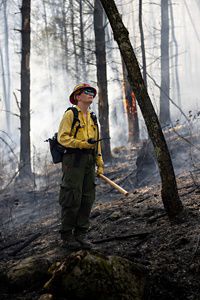
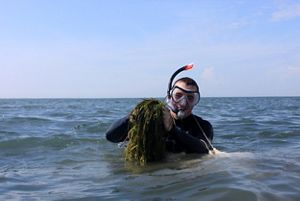
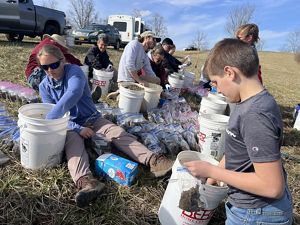
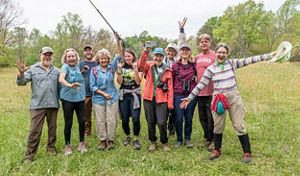
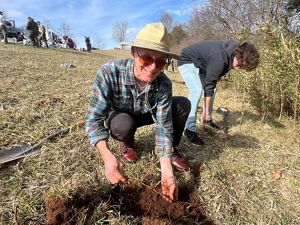

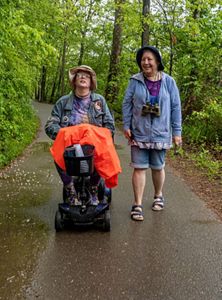
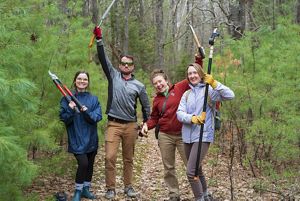



TNC VA Burn Crew : Black Panther Burn for The Nature Conservancy on April 16, 2024 in Bath County, VA. © Kyle LaFerriere Photography

Eelgrass Restoration: Volunteer snorkelers help to collect millions of eelgrass seeds off the shore of Oyster, VA. © Daniel White

River Cane Restoration: TNC VA volunteers preserve river cane rhizomes in sandwich bags until they can be replanted. © Nick Proctor

TNC VA Volunteers: Volunteers after our annual watershed cleanup work day. © Mark Schwenk

River Cane Restoration: TNC VA volunteers help harvest, propagate, and plant native river cane. © Nick Proctor

TNC Volunteers: Father and son volunteering for our annual watershed cleanup event. © Mark Schwenk

Birding Event: TNC VA volunteer program hosts birding opportunities for community members. © Mark Schwenk

TNC Volunteers: Preserve Stewards visit a preserve at least 4 times a year to assess trail and preserve conditions and perform basic trail maintenance. © Sam Moore

Skills-Based Volunteer: TNC volunteers bring different kinds of talents and expertise. © Rui Rezende

Longleaf Pine Planting: TNC VA volunteers plant longleaf pine trees at Piney Grove Preserve. © Mark Schwenk
More Volunteer Opportunities
View All OpportunitiesOur Conservation Work
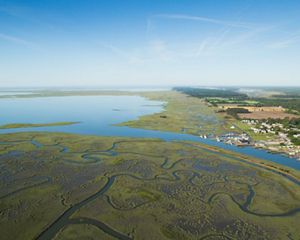
Volgenau Virginia Coast Reserve
Empowering resilient coastal communities on Virginia's Eastern Shore.
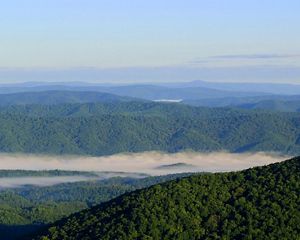
Allegheny Highlands Program
Working to protect and restore forests, rivers and wildlife in a critical corridor of the Central Appalachians.
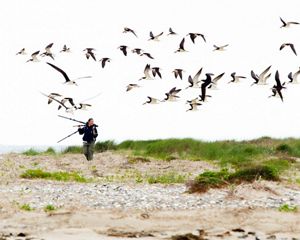
Migratory Bird Conservation
Guided by decades of research & monitoring, our scientists are helping to protect migratory bird populations throughout VVCR's coastal habitats.
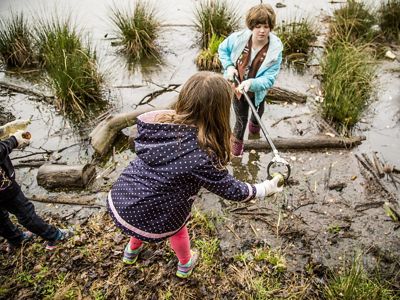
Watershed Cleanup
Each year since 2016, the Virginia Chapter has partnered with Fairfax County Park Authority in Northern Virginia to host a Chesapeake Bay watershed cleanup. The goal of the cleanup is to keep trash and debris out of waterways that flow into the bay.
The most common items found during our cleanups include plastic bottles and bags, cans, cigarette butts, styrofoam and glass bottles. Since the cleanups began, over 4,500 volunteers have removed roughly 30 tons of trash from over 150 miles of streams, shorelines, and trails across Fairfax County.
While the numbers are impressive, it’s the stories that make this effort successful, too. Many volunteers share how the cleanup impacted their children and opened their eyes to the environmental challenges we face. Volunteers often ask how they can continue to make a difference year-round.

Join this Year's Watershed Cleanup
Subscribe to our volunteer newsletter, and we will notify you when it's time to sign up! Join your community and neighbors to remove trash from your local waterways.
Watershed Cleanup Through the Years
The annual watershed cleanup event is a popular event for families and offers an opportunity to give back to nature and the community.
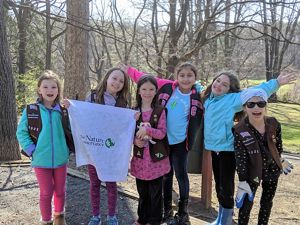
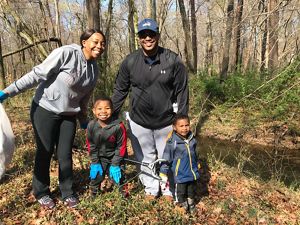
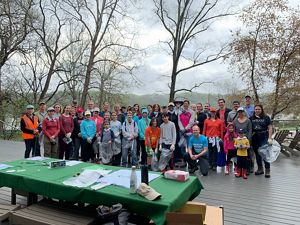
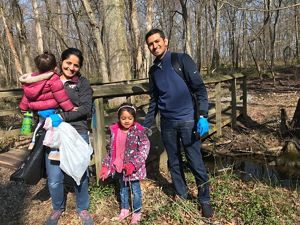


Fairfax County Cleanup 2019: The annual watershed cleanup event is a popular service project for local Girl Scout troops. Roundtree Park. © Jeanne Chang / TNC

Fairfax County Cleanup 2019: Doing something good for the community and for nature is a family affair! Ellanor C. Lawrence Park. © Patricia Greenberg

Fairfax County Cleanup 2019: 40 volunteers collected 50 pounds of trash at Riverbend Park, including 50 golf balls. © Christopher Topik

Fairfax County Cleanup 2019: Doing something good for the community and for nature is a family affair! Ellanor C. Lawrence Park. © Patricia Greenberg

Fairfax County Cleanup 2019: A couch, Safeway shopping cart and bikes were the larger ticket items collected at Ossian Hall Park. © Megan Whatton / TNC

Seagrass Restoration
Eelgrass (Zostera marina) is a seagrass that once thrived in the coastal bays of Virginia. In the early 1930s, a noxious slime mold and the powerful Chesapeake-Potomac Hurricane combined to devastate seagrass meadows in Virginia’s coastal bays. The Seaside Seagrass Community Restoration Program has been conducting highly successful efforts to restore eelgrass in the nearby coastal bays since 1999.
Each year, typically in May, 40 to 60 volunteers sign up and suit up to be part of the largest successful seagrass restoration project in the world! . Over more than a decade, nearly 500 volunteers have given 2,175+ hours to the effort, which has been vital to seagrass returning to the Eastern Shore. You can be a part of this success story. Volunteer snorkelers and water lovers are needed to collect millions of eelgrass seeds offshore of Oyster on Virginia's Eastern Shore.
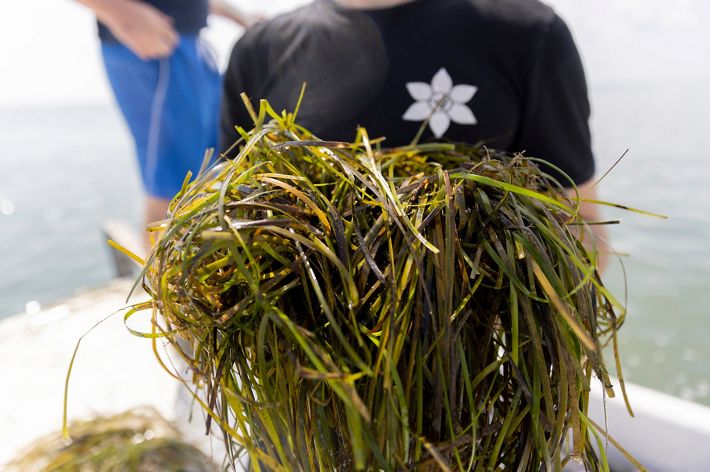
Volunteers collect reproductive shoots containing ripe seeds from underwater plants. The shoots are measured into water tanks where the seeds are then cured, separated, and prepared for fall planting.
Trips will last from 4-5 hours. Volunteers will meet at the eelgrass tanks near 6493 Sunnyside Road, Cape Charles, VA. If you have not collected before, we highly encourage you to sign up for at least two collection days. Volunteers must sign up to get updates, as collection days each year are weather-dependent and cancellations may occur.
For more information or to sign up, call or email Jen Dalke, Volunteer Program Manager, at jdalke@tnc.org or 540-335-1302 (cell).
In partnership with the Virginia Institute of Marine Science (VIMS), along with several partners in the Seaside Heritage Seagrass Community Restoration Program, VIMS and The Nature Conservancy have broadcast more than 72 million seeds into 600 acres to help accelerate the natural spread of eelgrass, which now covers almost 9,000 acres in South, Spider Crab, Hog Island, and Cobb Island bays..
The program's success offers a blueprint for restoring and maintaining healthy marine ecosystems around the world.
-
Volunteers should be comfortable with snorkeling and being underwater. During low-tide collection, the water will be about waist deep.
Collection takes place in the seagrass meadows of South Bay off Oyster, Virginia, on the Eastern Shore. Departure times vary based on the tide.
Volunteers board an open 24’ Carolina Skiff to get to the collection site. We can only transport those who are actually collecting.
Trips typically last from 4-5 hours.
-
The collection schedule depends on the weather and seed ripening. We try to collect a few days before, during, and after peak d after peak ripeningg, all of which can be difficult to predict. Typically, these dates fall between the last half of May and as late as the first week of June.
Weather and timing are variable, and trips may change on short notice. It is important that volunteers are flexible.
It is very important to show up if you sign up so that we can plan transportation and logistics appropriately. Trips typically last from 4-5 hours. If you have not collected before, we highly encourage you to sign up for at least two collection days.
-
It is important to note that volunteers need to be flexible, as collection trips may be canceled last minute due to conditions: choppy water, wind, etc. It is the volunteer’s responsibility to determine if a collection date has been canceled.
The Nature Conservancy is not responsible for any lodging, equipment or travel costs incurred if a collection date is canceled.
We will send you an email if the workday is canceled. If you would prefer to have a phone call or text, please contact Jen Dalke at jdalke@tnc.org or 540-335-1302.
-
If you have a wetsuit, snorkel, mask and/or booties, please bring them. If you don’t have the necessary gear, please let us know as we have limited supply. Please note that there is no good place to change on the boat or at the meeting location.
You will need:
Snorkel and mask
Wetsuit
Neoprene booties or other water shoes
If you have a wetsuit hood, bring it as you may get cold.
Dress in layers—bring dry/warm clothes to change into or put on top of your swimsuit
Drinking water and snacks
Sunscreen & insect repellent
Towel(s)
The water temperature will be around 65-70 degrees F. You may also prefer some type of water shoe or hood. You are responsible for your personal gear. 70 degrees sounds warm, but after an hour you will get chilly. Dress in layers.
-
There will be on-site training each collection day. Volunteers will be trained on how to identify the reproductive shoots of the eelgrass plant, how to collect and bag them, along with other related educational information.
-
The Chesapeake Bay Bridge Tunnel has toll charges. Visit the CBBT website for cost information and other details.
-
If overnight accommodations are needed, please contact one of the following local businesses for rates and availability.
- Kiptopeke State Park: Camping, family lodges, RVs and yurts available. Reserve online or call 1-800-933-PARK.
- Sunset Beach Resort Hotel: Call 757-331-1776 to reserve a room.
- Cape Charles House Bed and Breakfast: Call 757-331-4920 to reserve a room.
- Seagate Bed and Breakfast: Call 757-331-2206 or email sea_gate@verizon.net to reserve a room.
- Hampton Inn, Exmore: Call 757-442-7722 to reserve a room.
- Quality Inn & Suites, Exmore: Call 757-442-7378 to reserve a room.
-
Our thanks to the partners who make this event possible.
- Hampton Roads Community Foundation
- Virginia Coastal Zone Management Program
- Norfolk Southern Foundation
- National Oceanic Atmospheric Administration
- The Campbell Foundation
- The Volgenau Foundation
- William and Mary's Virginia Institute of Marine Science
- Virginia Coast Reserve Long-Term Ecological Research
- US Army Corps of Engineers
- Virginia Marine Resources Commission
- Virginia Eastern Shore Keeper

Volunteer Spotlight
Bob McLaughlin
Bob helps with many projects as part of TNC’s Virginia Coast Reserve Program, including oyster habitat restoration and eelgrass seed collection, and is a member of the Brownsville Preserve volunteer stewardship crew. As an Island Steward, he helps TNC monitor visitor activities and, with his wife, Patty, educates visitors about breeding shorebirds, colonial waterbirds, and the natural resources of barrier islands like Cedar, Metompkin, Smith, and Parramore Islands. Bob says, “The best thing about volunteering for TNC is the people.
TNC staff and my fellow volunteers are, without exception, awesome people who care about our planet.” Bob is retired, but began his professional career as an outdoor educator at Chincoteague Bay Field Station, conducted marine research, worked in the IT industry, and started two businesses.
Learn About Conservation

Restoring Eelgrass on Virginia’s Eastern Shore
Go into the water and behind the scenes at the Volgenau Virginia Coast Reserve for the largest successful seagrass restoration project in the world!
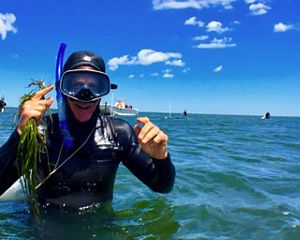
Marine Habitat Restoration
From building oyster reefs to establishing the largest successful eelgrass restoration effort in the world, we're putting science to work in Virginia's coastal bays.

Volgenau Virginia Coast Reserve
Empowering resilient coastal communities on Virginia's Eastern Shore.

Which place on Earth has the most nature and the most engaged residents?
The City Nature Challenge aims to find out!
The City Nature Challenge (CNC) is an international community science effort to discover and document plants and wildlife in cities across the globe. Stay tuned for this year's City Nature Challenge. We host guided hikes, volunteer events, and bioblitz opportunities!
Explore Your World
The City Nature Challenge encourages people to discover and document the biodiversity of our urban spaces. What began in 2016 as a friendly challenge between Los Angeles and San Francisco has now grown to an international event!
There are many ways to look for nature right in your own backyard. Discover the plants that are growing on their own and the insects and pollinators that live in and around our homes and yards. You never know what you might find!

Join this Year's City Nature Challenge
Subscribe to our volunteer newsletter, and we will notify you when it's time to sign up!
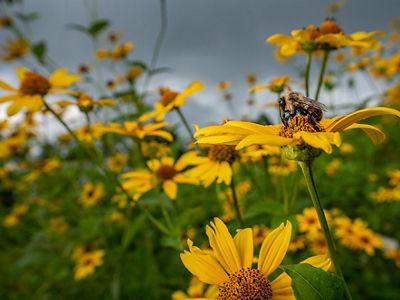
How to Participate
It’s easy to get involved using the iNaturalist app (free on the App Store or Google Play). Just take a picture of a plant or animal and upload it to the app. Observations made during City Nature Challenge also provide valuable data for scientists, land managers, non-profits and governments about the areas that they help to protect.
Explore your neighborhood parks—or even your own backyard. There's nature all around you!
Download
How to Find Insects
Insects are probably some of the easiest organisms to find in and around our homes, since they’re abundant and incredibly diverse! But where should you look to find them? What can you use to catch them?
These sites provide some guidance on how to find and temporarily hold insects. Be sure to release them after you've posted your observation on iNaturalist!
Moth Lighting
Setting up a light and a sheet to attract moths is a simple and easy way to bring more nature into your backyard. Photographing moths on the sheet is easy, and you’ll definitely attract other flying insects as well!
Science Friday has a great set of instructions for observing moths, and the Devon Wildlife Trust's video shows how to build your own moth light to attract a wider variety of moths. (Note: in the video, "torch" is British for flashlight.)
Land Steward
Virginia’s Preserve Volunteer Community Program provides a vital service by helping us maintain and monitor our public preserves across the state. Depending on your location, you can serve as either a Preserve Steward or an Island Steward.
Preserve Steward
There are different ways to volunteer at our nature preserves based on your interests, skills, and time availability.
Community Members: become involved with a preserve without committing time to stewardship work. Receive periodic updates about the preserve and special events.
Preserve Stewards: visit a preserve at least 4 times a year to assess trail and preserve conditions and perform basic trail maintenance by removing fallen branches and overgrown vegetation.
Preserve Leaders: demonstrated commitment to the preserve and willingness to take on additional responsibilities like managing communication and scheduling, leading workdays, and guiding naturalist hikes.
Please contact the Virginia Volunteer Program by email vapreservestewards@tnc.org to receive further information.


Preserves you can volunteer at:
Bottom Creek Gorge Preserve, Montgomery County
Cumberland Marsh Preserve, New Kent County
Fortune's Cove Preserve, Nelson County
- Fraser Preserve, Fairfax County
- Piney Grove Preserve, Sussex County
Voorhees Preserve, Westmoreland County
Warm Springs Mountain Preserve, Bath County
Preserve Steward Resources
-
Voorhees Preserve Trail Map (.pdf)
Island Steward
Opportunities are available on Virginia’s Eastern Shore
Island Steward is a volunteer position best suited for someone who lives on the Eastern Shore of Virginia, visits The Nature Conservancy’s barrier islands on their own means, and would like to serve as a TNC representative on these occasions.
Boat Ramp Steward is a volunteer position to distribute educational brochures at seaside boat ramps on weekends, especially holiday weekends, throughout the summer.


Volunteer stewards act as official representatives of TNC’s Volgenau Virginia Coast Reserve program, to educate visitors about the sensitive natural resources of VVCR’s barrier islands by talking with visitors and handing out brochures as needed. The steward’s educational efforts focus on, but are not limited to, breeding shorebirds and colonial waterbirds. Duties include:
Attend annual training sessions at TNC’s office in Nassawadox, typically held in early spring.
Educate visitors about the islands' sensitive natural resources through casual conversation and the distribution of informational literature.
Monitor islands and report incidents of use policy violations to TNC staff immediately.
Island Steward Resources
-
No regular island visitation schedule will be set; steward responsibilities will be on an on-going, opportunistic basis, when volunteers choose to visit the islands. Stewards interested in volunteering at boat ramps can set their own schedule and report days and hours spent to TNC staff.
-
Volunteer should be local Eastern Shore residents or frequent visitor who is familiar with the local waters.
Excellent communication skills which can positively and effectively, yet casually, educate all island visitors.
Desire to help protect the biodiversity of the Volgenau Virginia Coast Reserve through education of island visitors.
Must have transportation to get on and off the islands, as well as familiarity with the local waterways unless only interested in volunteering at boat ramps.
Must undergo a background check (requires SSN) and Nature Conservancy Youth Safety Qualifications prior to volunteering which will take 1.5-2 hours of time.
Explore Our Preserves

Fortune's Cove Preserve
Fortune's Cove provides a challenging hike that rewards visitors with stunning mountain vistas.

Fernbrook Natural Area
Fernbrook Natural Area is an excellent example of a southern Piedmont forest in varying stages of succession.

Volgenau Virginia Coast Reserve
Empowering resilient coastal communities on Virginia's Eastern Shore.

Native Plant Restoration
Plants naturally found in a given geographic area, not introduced by humans, are considered native. These plants provide crucial food and habitat for wildlife, and important environmental benefits. Factors such as rising temperatures, habitat destruction, and invasive species are driving the decline of native plants worldwide, and we need your help to restore them in Virginia!
Groundcover Restoration at Piney Grove Preserve
The Nature Conservancy is working with partners and the community to restore longleaf pine savanna habitat—one of the most biologically diverse systems in North America, our founding forest, and home of the endangered red-cockaded woodpecker. Volunteers are helping with our groundcover & pollinator habitat restoration project to increase the pace and scale that native grasses and wildflowers spread by collecting native seeds, sowing them with our partners at the Virginia Department of Forestry, and planting seedlings in the Virginia Pinelands.
Native River Cane
Native river canebrakes currently occupy less than ~2% of their native range. This unique habitat provides shelter for migratory songbirds, stabilizes streambanks, and serves as a host plant for rare insects, such as cane-feeding moths. TNC and volunteers are assisting the lead partner, Virginia Department of Conservation and Recreation, in planting river cane along the Clinch River in the Town of Cleveland. Check for upcoming opportunities.

Stay in the Loop!
Subscribe to our volunteer newsletter and stay up to date with all our volunteer opportunities in your area and throughout Virginia.
We Can’t Save Nature Without You
Sign up to receive monthly conservation news and updates from Virginia.
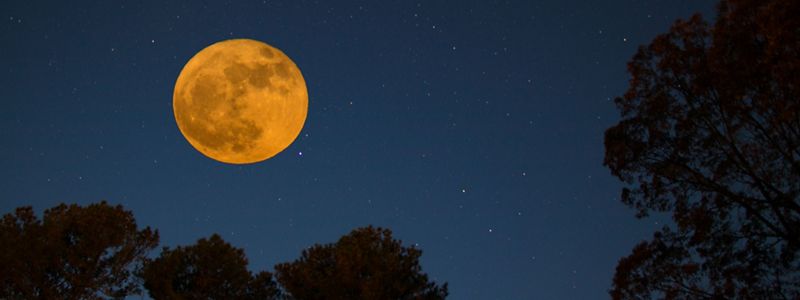
Learn About Our Programs
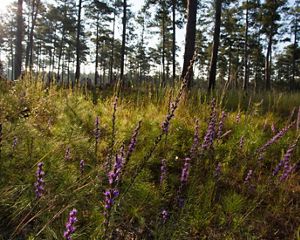
Virginia Pinelands Program
Protecting centuries-old cypress swamps, the state's rarest bird and iconic longleaf savannas.
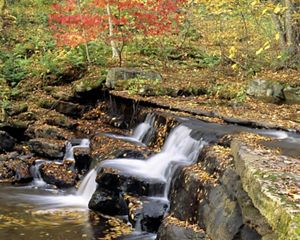
Clinch Valley Program
Conserving the Clinch River, and supporting nature-based economic and recreational opportunities in Southwest Virginia communities.

Volgenau Virginia Coast Reserve
Empowering resilient coastal communities on Virginia's Eastern Shore.
